In an era of constant bad news about the climate crisis, it can be tough to find something to be optimistic about. So in 2019 when articles started circulating declaring that tree planting had “mind-blowing potential” to combat climate change, a lot of people got excited. To be clear, the best thing we can do to tackle the climate crisis is to stop burning fossil fuels, but there are also ways that we can soak up some of the C02 that we’ve put into the atmosphere. Trees and other plants actually do this naturally. They take in carbon from the atmosphere and store it in their leaves and branches and trunks.
Some scientists from Switzerland tried to calculate how much carbon could be removed if we planted trees all around the world. They published a paper in the journal Nature arguing that if humans planted a trillion trees, it could remove one-third of all of the CO2 we had put up there in the first place. It was a dramatic finding that led to a lot of dramatic headlines. The way that the paper was being described in some articles, you would think that trees were some kind of climate change panacea, that they were the key to fixing global warming.
But there’s one scientist who gets a little nervous when he hears people talking about planting trees all over the place. Because he knows from first-hand experience that forests aren’t the only ecosystem that stores carbon, and not every landscape should be covered in trees.
Disrupting the Flow
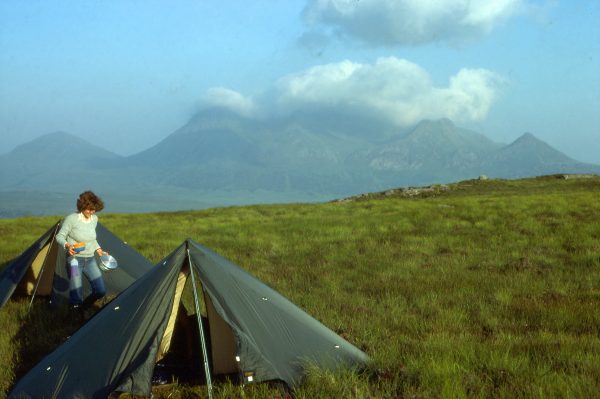
Richard Lindsay is a scientist at the University of East London’s Sustainability Institute. “Everybody’s saying, let’s plant a million trees, let’s plant a billion trees,” he says, “Yes, I’m all in favor of that. But let’s plant the right tree in the right place.” Lindsay has personal experience watching a lot of trees get planted in the wrong place. Back in the 1980s, he saw firsthand the impact of a controversial tree planting scheme in Scotland that ended up threatening one of the most special ecosystems in the world.
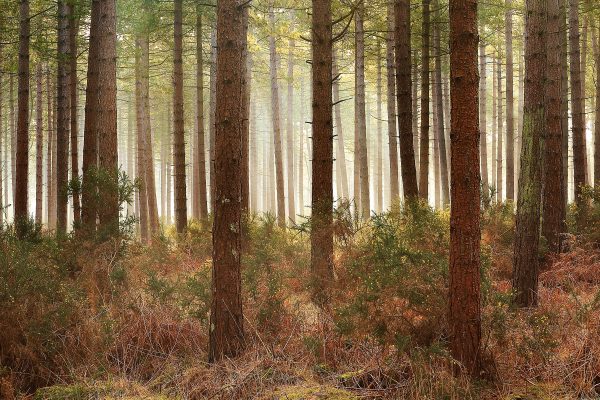
In the 1980s, the British government started using tax breaks to private citizens to encourage tree planting efforts around the country. The goal was to boost the UK’s timber supply. And it was a really good tax break, especially for the super-rich. But questions started to emerge about where exactly these trees were going to go. In order for this to work, investors needed large tracts of undeveloped, unwanted land. And there was one place that met the criteria—it was called the Flow Country. The Flow Country is a vast open area in the far north of Scotland that looks almost like the Arctic tundra. The best way to appreciate the Flow Country might be in an airplane. From the sky, it looks like a Persian rug—streaked with colorful sphagnum mosses and dotted with little pools of water.
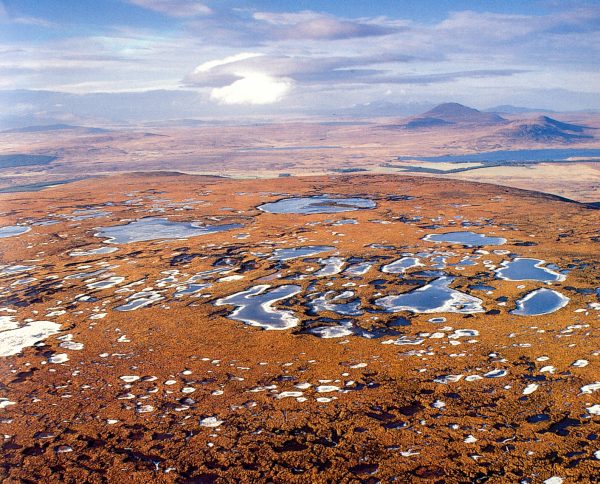
From the ground, the Flow Country is harder to love. “The majority of the landscape would be this wet, boggy, soft, really quite colorful carpet of bog mosses. So as you walk across it, it’s a bit like walking across a sprung mattress, except you need rubber boots,” explains Lindsay.
Scotland is cold and damp, but this foul weather creates the perfect conditions for an incredible substance called peat to form. The land is so saturated that there’s very little oxygen and it’s really hard for organic matter to break down. Over thousands and thousands of years, this partially decomposed material, or peat, has been slowly accumulating. In some parts of the Flow Country, it’s now more than 30 feet deep. The amazing thing about peat from a climate perspective is that it is full of carbon.
The Underappreciated Habitat
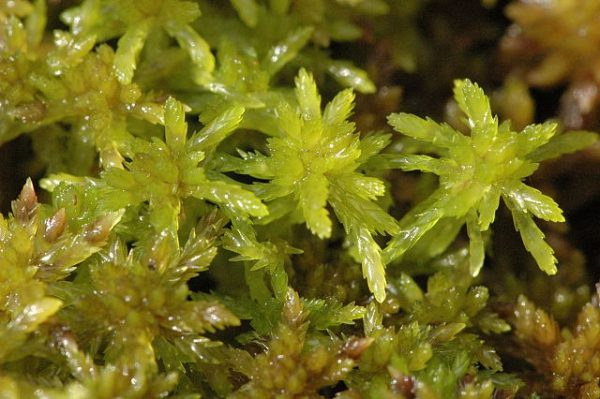
When we think about carbon storage, we tend to think about forests, but peatlands are also incredible carbon sinks. Merritt Turetsky, is a peatland scientist at CU Boulder. On Twitter she goes by the “Queen of Peat,” and she says peatlands are hotspots of carbon storage. “So the amount of carbon stored in peatlands on a per-square-meter basis is often 10 to 15 times higher than that same area of land in a forest or in an agricultural setting.” And in Europe, peatlands contain five times more carbon than forests. But back in the 80s, most people didn’t know this remarkable fact about peat. If anything, bogs were seen as scary places to be avoided — in part, because they were filled with bog bodies that had been pickled for centuries in the anaerobic muck. Occasionally these eerily well-preserved corpses from the Bronze and Iron Ages would surface from the bogs of Northern Europe.

And so in the early 1980s, when the forest industry started looking for large tracts of undeveloped land to plant trees, the Flow Country was an obvious choice. It was seen as a wasteland that was ready to be developed into something more useful. There ended up being a sort of race between the forestry groups who started draining the peat bogs and planting trees, and conservation groups, who began trying to catalog all of the biodiversity in this fragile landscape before it was completely covered up—conservationists like Richard Lindsay.
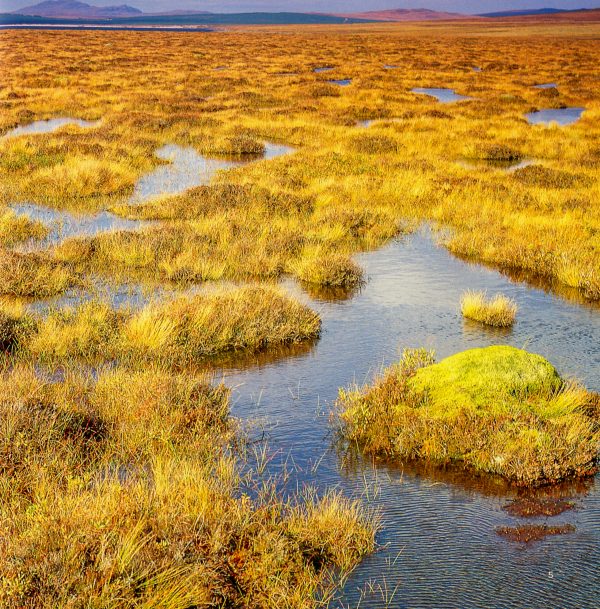
Lindsay and his team surveyed the Flow Country over several summers, and they determined it wasn’t a wasteland at all—but a thriving wetland habitat that had been underappreciated for centuries. His team found a range of ecosystems that were unlike anything else found in the world. But as all this was happening the tree planting was already underway. And so at the same time that Richard was discovering the secrets of this delicate landscape, the forestry companies were tearing it up. They plowed up the bogs, drained out all of that water, and planted non-native, quick-growing conifers. Pretty soon little patches of evergreen plantations were sprouting up all across the Flow Country.
The British Equivalent of a Tropical Rainforest
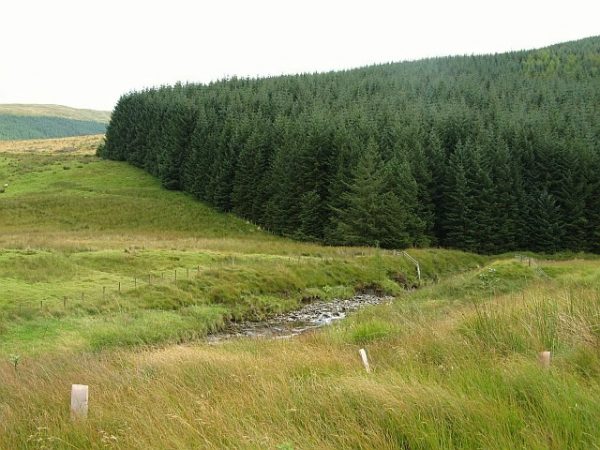
These dense plantations were terrible places for native wildlife. They quickly filled up with predators that scared off many of the birds that Lindsay and his team were just beginning to learn about. The peatlands were turning into a tree farm. As they did their work Lindsay and the other scientists were called to testify in local meetings about the forestry project. And they had to argue that this seemingly empty, worthless landscape, was actually worth protecting. Lindsay saw it as the UK’s equivalent of a tropical rainforest.
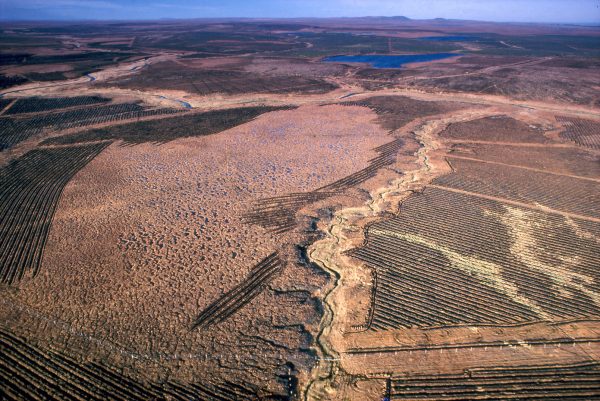
But it was hard to convince people that more trees, in this particular place, was a problem. Richard Lindsay is all for planting trees, but it needs to be the right species in the right type of environment. “You know, medication is a good thing when used in the right way in the right place. [When] used in the wrong way in the wrong place, it’s a poison.”
Over time, public opinion began to turn against the tree planting. A lot of that had to do with the fact that it seemed like an egregious form of tax avoidance, but the message about the peatlands was also starting to get through. The government eventually agreed to protect about half of the peatland that Richard and his team had surveyed, and a few months later, they ended the tax scheme altogether. It was a big win for the bog, and the conservationists fighting to protect it. And in the years that followed the way that local people viewed the Flow Country began to shift away from just a useless wasteland.
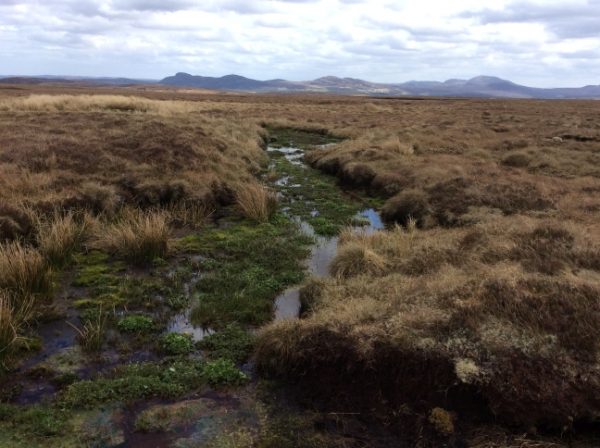
But a lot of damage had been done. Over 150,000 acres of the Flow Country had been drained and planted with trees. In the end, these trees never grew very well. They were short and stubby and not very useful as timber. The plantations pushed out native wildlife that depended on the bog and damaged the precious peat that was storing all that carbon. Even though it’s underground, the carbon in a peatland is not locked away forever. Just as a forest can burn down, a peatland can be degraded. It can be gobbled up for agriculture or ranching. And when that happens, a lot of its carbon goes up into the atmosphere, which is what happened in the flow country. Except, in this case, the crop that was gobbling up the peatland was trees.
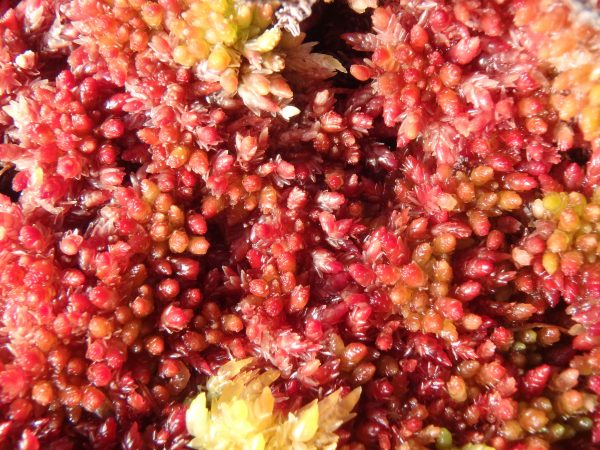
In 1995 the Royal Society for the Protection of Birds purchased a 50,000-acre reserve in the Flow Country on land that had been heavily planted with trees. Since then they’ve been working to bring back the bog. First, they cut the trees down and haul them out. The next step is to “re-wet” the soil. The team builds dams in the peat to try and return the water table to its normal level and get that soggy bog back. But over the course of decades of restoration, the bogs have switched back from a carbon source to a carbon sink.
Not All Habitats are Equal
Scotland has a goal of restoring 600,000 acres of peat bog by 2030. But at the same time, they want to plant 30,000 acres of new forest each year. They are planting trees in one place, just as they are cutting trees down in another, and all of it in the name of mitigating the climate crisis. Paul Turner is a warden with the RSPB in the Flow Country, and he says that makes perfect sense. “It’s understanding that not all habitats are equal, that not all habitats should have trees on them, and that when we’re talking about the sort of climate change mitigation that one answer, it doesn’t doesn’t apply to every problem.” Instead of just thinking about how many trees we can plant, we should be thinking about all the different ways we can maximize carbon storage in any given landscape, without sacrificing biodiversity. That might mean restoring peatlands or protecting healthy grasslands and forests, and it might mean planting more trees.
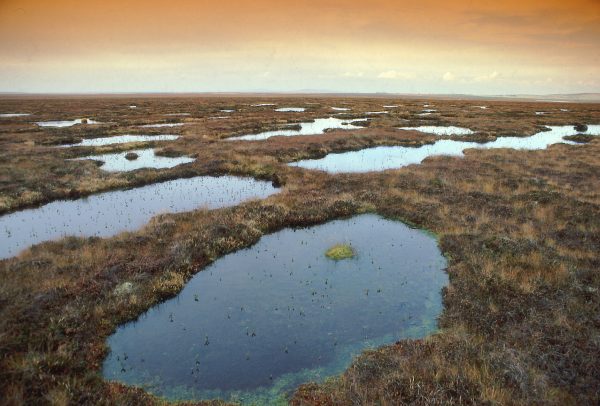
If planting trees is the right thing for a landscape, we’re going to have to do more than just plant them. Forest Fleishman has studied tree planting efforts that are being done for climate change, and he’s found that often they fail because all of the focus is on that initial act of getting the saplings in the ground. Often in the years that follow the trees get cut down by people, or get eaten by cows, or burned in a fire. Rather than just planting trees, Fleishman says we should be working to ensure that trees grow. He says we need to stop illegal logging and boycott the companies that are driving deforestation, and work to protect the rights of indigenous people who are often the best protectors of forests. And trees on their own will never be enough. Any way you slice it, climate change is a complicated political, economic, and technological problem. There is no one simple solution. But we need to solve it anyway.
If you want to read more about the flow country and peatland restoration check out this article in Nature by Virginia Gewin, and this one in The Guardian by Sharon Levy. To read more about the role peatlands can play in fighting climate change check this out in the New York Times.



Comments (17)
Share
I spent my weekends in the late 80s and early 90s in Ireland help fill in drains in bogs in Ireland. Bog, by the way, is the Irish (Gaelic) word for ‘soft’.
Bogs *are* wonderful. They are great to walk on as well as being an ecological wonder.
Unfortunately, the Irish don’t have a great record in saving their bogs. Bord na Mona (the Peat Board – the government agency tasked with exploiting peat bogs) have a lot to do with this.
Another interesting anecdote that we learnt in school about bogs has to do with the pH of the moss. Bogs are acidic. They have a very low pH and, as a consequence, are quite antiseptic. During WW1 soldiers in the Flanders used the moss as temporary bandages for wounds until they were able to get proper bandages.
Bogs also take a looong time to grow – about a hundred years to get the ecosystem going in a self-sustaining way, if my memory is correct.
Tundra comes from Russian, not Finnish. The Finnish word Tunturi means fell, as in a flattened mountain. Finland doesn’t have any tundra.
Roman must have meant there’s no bogs in San Fransisco, or clearly didn’t finish his botany studies. Where are cranberries grow in close proximity to dense biodiverse rainforests on the west coast? Oregon. This misspoken counterfactual is forgivable because the episode is so excellent in laying out such an important and nuanced environmental strategy. I’m sure I’m not the only Oregonian, surrounded by marshlands, that instantly objected to this passing comment.
My sister moved to Co Galway, Ireland in ~1961, when I was 11. I remember hearing people there talk about burning peat to generate heat in homes. That now seems like a doubly bad idea (is it still done?) – losing the carbon capture of the peat in the bog, and then releasing the carbon from the peat as it is burned.
Years later, I moved to London for work, and lived there for five years. Two common vernacular terms included the word “bog”: One involved “bog” as a term for the loo, or bathroom. The other is the term “bog standard”, meaning run of the mill or common.
Thanks for all the shows, and for the book. Yours is my favorite podcast out of a wide range I listen to.
While I was listening to the podcast and the long list of English words for bog was pronounced, it came to my mind a strangely beautiful German song, “Die Moorsoldaten”. It was composed by the inmates of a Nazi concentration camp being sent to work… in the moorlands, of course.
Here is my favorite version, from a band called “Die Toten Hosen” https://open.spotify.com/track/7pG7YLRCaMKyT6NF8BWuhr?si=MvtexgkaR-KPY06XCbJ7PQ
Guys, “For Peat’s Sake”? Hello?
https://idioms.thefreedictionary.com/for+the+love+of+Pete
It makes sense. I have literally never heard it said that way, though.
While this was a great podcast/article I have one major problem, the use of the term “british isles” this is a colonialist and imperialist term that the Irish government actually has an official position completely rejecting its use.
The team at 99percentinvisible usually do a great job avoiding offending people which makes this such a surprising oversight.
I would really appreciate if there term was avoided in future.
Thank you.
Great story, as always Emmett, Roman and 99pi! I was so hoping to hear mention of Minnesota’s vast patterned peatlands and the hundreds of thousands of acres protected as natural areas. Learn more at https://www.dnr.state.mn.us/snas/peatlands.html
Hey 99pi – heard this podcast about bogs and thought you might be interested in the Marvell Experimental Forest here in Minnesota. Very interesting look at bogs and how they relate to climate change:
https://en.m.wikipedia.org/wiki/Marcell_Experimental_Forest
Thank you for another great episode.
Cool factoid: A Major League Baseball park was named after a bog.
Fenway Park in Boston!
https://www.fredericklawolmsted.com/back.html
And, one more thing: I love your book. I bought several copies for holiday gifts. Shopping is done !
Here in the Netherlands the country was full of peatland once. But over the centuries we dug a lot of it up as a fuel.
Watching PBS’s “The Age of Nature” “Understanding” episode and they talked about Bogs so now I’m so confused.
I spent many days tromping around peat bogs in the New Jersey pine barrens (acres and acres of dwarf trees and tea colored water) in botany classes undergrad. Mysterious places. Carniverous pitcher plants, sundews and if you were lucky, ripe huckleberry bushes. Finding a bog with a nice ‘eye’ of clear water at the center was a treat. You get a real sense of a big living organism walking on a floating bobbing mat of peat. Take a magnifying glass and look closely at the architecture in mosses and lichens in these special places. It’s a sci-fi landscape in small scale. At night the soundscape is something else, tree frogs, crickets, Katydids, and the haunting songs of whipper wills.
My good friend James Boyce has released a great new book called “Imperial Mud – The fight for the fens” which is all about the bogs. It’s a pitty this wasn’t included in this great episode. https://iconbooks.com/ib-title/imperial-mud/